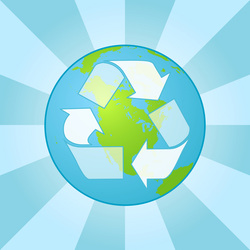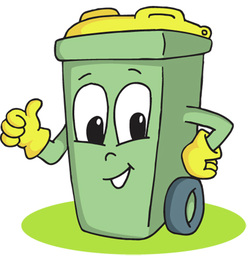FACTS ABOUT RECYCLING!!!
By Gabi Dempsey
Paragraph.
· In 2005 at least 6.8 million tonnes of household waste were recycled or composted.
· Learning to reuse things that are still good in shape can save our environment. Using things creates less air and water pollution than making a new item or even recycling.
· Plastic bags cut into thin strips and tied together can be reused to knit or crochet bags, purses and clothes.
· Buying used clothing at a consignment or thrift stores helps save energy because it extends the life of a garment.
· Learning to reuse things that are still good in shape can save our environment. Using things creates less air and water pollution than making a new item or even recycling.
· Plastic bags cut into thin strips and tied together can be reused to knit or crochet bags, purses and clothes.
· Buying used clothing at a consignment or thrift stores helps save energy because it extends the life of a garment.
FACTS ABOUT RECYCLING FOR PLASTIC BY AMELIA WARBURTON

- Do you know that Americans use four million plastic bottles every hour! Imagine if we used that much in the AISS Junior School.
All plastic bottles are recyclable, expect for the brown ones used to contain beer.
Did you know that these recycling signs MUST be on recyclable plastic bottles?
Recycling just one plastic bottle can save the same amount of energy needed to power a 60 watt light bulb for 6 hours!
Paper Recycling Facts by Sophia Navales

· Did you know an average British family can throw enough paper which is worth 6 trees in their household garbage?
· 75% of each tree that is cut down is not used to make paper, only wasted.
· It takes 70% less energy to make recycled paper instead of new paper.
· 98 tons of various resources are required to make one ton of paper.
· If all our newspaper was recycled we could save about 250,000,000 trees each year!
· Most of the paper wasted is high grade paper.
· Office paper is recycled into paper towels, tissue paper and toilet paper.
· Making recycled paper instead of new paper uses 64% less energy and uses 58% less water.
· Approximately 1 billion trees worth of paper are thrown away every year in the U.S.
· 75% of each tree that is cut down is not used to make paper, only wasted.
· It takes 70% less energy to make recycled paper instead of new paper.
· 98 tons of various resources are required to make one ton of paper.
· If all our newspaper was recycled we could save about 250,000,000 trees each year!
· Most of the paper wasted is high grade paper.
· Office paper is recycled into paper towels, tissue paper and toilet paper.
· Making recycled paper instead of new paper uses 64% less energy and uses 58% less water.
· Approximately 1 billion trees worth of paper are thrown away every year in the U.S.
Facts About Recycling Aluminum Cans by Sophia Navales
- It takes 80-100 years for an aluminum can to decompose (break down) in a landfill.
- Aluminum cans can be recycled into: soda cans, pie plates, license plates, thumbtacks, aluminum foil, and many other items.
- Recycling one aluminum can can save enough energy to power a TV for up to three hours.
- In the year 2000, 13,500 aluminum cans were recycled every minute in California.
- Discovered in the 1820s, aluminum is the most abundant metal on earth.
- Over 50 percent of the aluminum cans produced are recycled.
- A used aluminum can is recycled and back on the grocery shelf as a new can, in as little as 60 days. That’s closed loop recycling at its finest!
- Aluminum is a durable and sustainable metal: two-thirds of the aluminum ever produced is in use today.
- Every minute of every day, an average of 113,204 aluminum cans are recycled.
Recycling paper by Jasmine Lenta

Recycling half the world's paper would free 20 million acres of forest land.
Recycling one stack of newspapers about 6 feet tall saves the life of one tree 35 feet tall. Recycling approximately 1 ton of newspaper saves 17 trees.
The EPA has found that making paper from recycled materials results in 74% less air pollution and 35% less water pollution. This means that every ton of recycled paper keeps almost 60 pounds of pollutants out of the atmosphere that would have been produced if the paper had been manufactured from virgin resources.
Paper plus cardboard combined make up 73% of the materials in the landfill.
For every 15,000 tons of old newspaper recycled annually, 30 jobs are created to collect the paper, 40 jobs are created to process the paper, and 75 jobs are required to manufacture the newsprint.
Recycling one stack of newspapers about 6 feet tall saves the life of one tree 35 feet tall. Recycling approximately 1 ton of newspaper saves 17 trees.
The EPA has found that making paper from recycled materials results in 74% less air pollution and 35% less water pollution. This means that every ton of recycled paper keeps almost 60 pounds of pollutants out of the atmosphere that would have been produced if the paper had been manufactured from virgin resources.
Paper plus cardboard combined make up 73% of the materials in the landfill.
For every 15,000 tons of old newspaper recycled annually, 30 jobs are created to collect the paper, 40 jobs are created to process the paper, and 75 jobs are required to manufacture the newsprint.

